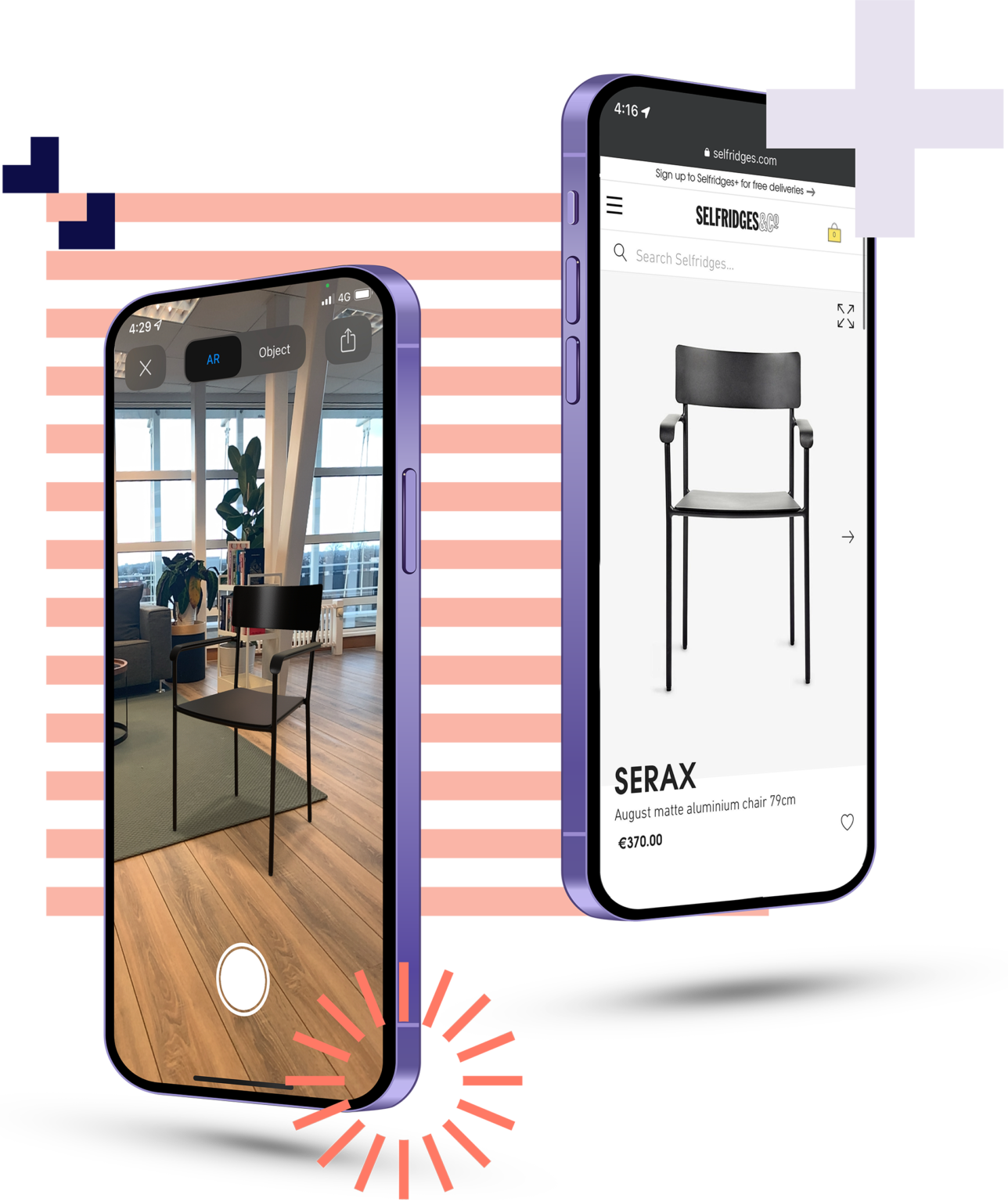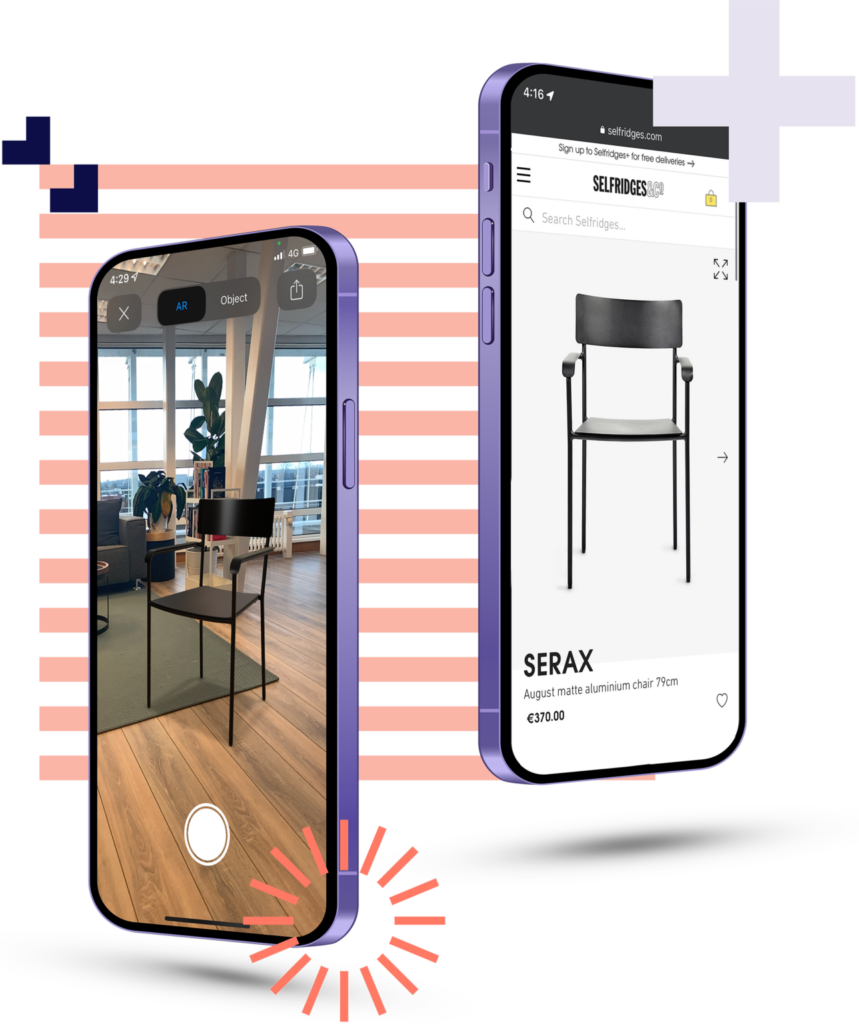The ecommerce landscape is evolving rapidly, and businesses are constantly seeking for innovative ways to attract customers, increase conversions, and to foster long-term loyalty.
In recent years, 3D product viewers and augmented reality (AR) have emerged as powerful tools for enhancing the ecommerce experience. However, several myths and perceived blockers often deter businesses from implementing 3D product viewers and AR. In this article, we debunk these myths and provide practical solutions to overcome any potential challenges.

Myth 1: Cost / ROI
Many businesses assume that implementing 3D product viewers and AR requires significant financial resources. While there may be costs associated with acquiring or creating 3D models and investing in software solutions, the benefits outweigh the initial investment. Improved customer engagement, reduced product returns, and increased conversions can ultimately lead to a positive return on investment.
Solution:
Start small and focus on key products or categories. Instead of attempting to create 3D models for your entire product catalog, prioritize items or categories that are likely to have a significant impact on your sales.
Then, conduct A/B tests and sequential analyses to measure and analyze the uplift, allowing for data-driven decisions. Once the data proves the benefits of implementing 3D product viewers and AR, you can gradually expand to include more products and categories.
Use our estimation tool to quickly see how much it costs to digitize a product.
Myth 2: Technological Expertise
One common misconception is that integrating 3D product viewers and AR into an ecommerce website is a complex and time-consuming process. While it does require some technical expertise, advancements in technology and the availability of user-friendly tools have made implementation much easier. Many ecommerce platforms now offer plug-and-play integration, simplifying the process and allowing businesses to add 3D product viewers and AR capabilities without requiring extensive development skills.
Solution:
Choose a user-friendly 3D viewer and AR platform that aligns with your ecommerce platform. Look for solutions that offer simple plug-and-play integration, comprehensive documentation, and reliable support. Additionally, consider collaborating with experienced third-party 3D and AR experts who can assist with the implementation process.
See how easy it is to integrate a 3D product viewer and AR into your PDP.
Myth 3: Content Creation
Developing high-quality 3D models and AR content is undoubtedly a resource-intensive and challenging endeavor. However, by leveraging skilled professionals, cutting-edge tools, and fostering collaboration, businesses can quickly implement 3D product viewers and AR.
Solution:
Businesses can mitigate the resource intensity of creating 3D models and AR content by making the process more manageable. Outsourcing the creation of 3D models and AR content is a viable option. Although there will be associated costs, it will ultimately be more efficient and cost-effective than attempting to handle everything in-house. Choose a partner who can consistently deliver the quality requirements for your needs, at scale, with dedicated teams.
Strategize the content creation process to make it more efficient and less overwhelming. Proper planning and execution can significantly smooth out the process, while end-to-end solutions completely eliminate the need for additional resources, as they handle everything from content production to analytics, and everything in between.
Myth 4: Compatibility
Ensuring compatibility across different devices, browsers, and operating systems is vital for the successful implementation and improvement of CRO metrics. The perceived inability that 3D product viewers and AR cannot function seamlessly on various platforms leads us to think that they will hinder the overall effectiveness of these technologies.
Solution:
Select a 3D product viewer and AR solution that is universally compatible, seamlessly running on all browsers and operating systems. It is essential for the AR support to extend to both iOS and Android devices, ensuring that all customers can experience the interactive elements regardless of their chosen device. To achieve optimal results, opt for a 3D product viewer and AR solution that works flawlessly on various devices, including desktops, laptops, tablets, and mobile phones.
Moreover, with over 1 billion people using AR and a high adoption rate, consumers are beginning to expect 3D and AR solutions as part of their shopping journey. Ensuring compatibility across platforms can help businesses meet this growing demand.








Myth 5: Performance and Bandwidth
One commonly misunderstood aspect of 3D and AR content is that they can be bandwidth-intensive, leading to slower loading times. This notion suggests that the increased data requirements of these immersive technologies may adversely impact CRO metrics. While it is true that 3D and AR content can demand more data compared to traditional 2D content, advancements in technology and internet infrastructure have effectively mitigated the potential negative effects.
Solution:
Utilize optimized 3D assets specifically designed for ecommerce solutions, striking a balance between quality and loading time. This ensures that a 3D product viewer loads in one second or less, depending on the network speed. Additionally, by implementing lazy loading for the 3D product viewer you can avoid negative page load metrics, this technique delays the loading of the viewer until it is needed, preventing unnecessary bandwidth usage and potential slowdowns.
QR code images can be added to Product Detail Pages (PDPs) or product carousels, minimizing the impact on page load speeds while still providing an interactive solution for viewing the product in 3D and AR. This approach ensures that retailers enhance the shopping experience without inadvertently creating bottlenecks that could deter potential customers.
Myth 6: Users are not interested in or do not understand 3D product viewers and AR.
Some businesses worry that their customers may not be interested in or capable of using 3D product viewers or AR. While it’s true that not everyone may be familiar with these technologies, studies have shown that customers value immersive experiences and appreciate the ability to visualize products before making a purchase decision.
Solution:
Educate your customers about the benefits of 3D product viewers and AR. Provide clear instructions on how to access and use these features on your ecommerce site. Consider creating tutorial videos or product guides that demonstrate the added value of these technologies.
Moreover, utilize data to guide your decision-making process. Conduct A/B testing and sequential analyses to evaluate how your customers engage with 3D product viewers and AR. The insights gathered from this data will enable you to make more informed decisions and tailor your implementation accordingly.
Conclusion
Implementing 3D product viewers and AR in an ecommerce site is not as daunting as it may seem. By dispelling common misconceptions and understanding the solutions to potential obstacles, businesses can unlock the benefits of these technologies and create a more engaging and immersive shopping experience for their customers.
Remember, the key is to choose a user-friendly platform, start with a focused approach, and educate your customers about the value these technologies bring. By doing so, you can overcome any perceived complexities, expand the application of 3D product viewers and AR across various categories, and realize a positive impact on your business’s bottom line.





